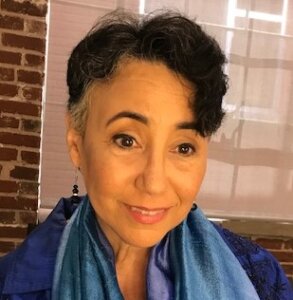Meet the Jews of color exploring what it means to be Black, Asian, Latino — and Jewish
New ADL fellowships fund films, programs and research on diversity, racism and intersectionality in Jewish communities

Graphic by Angelie Zaslavsky
With the growing recognition of Jews of color in the broader Jewish community comes an increased understanding of the harm that racially diverse Jews all too often experience in mainstream Jewish spaces.
Now, the Anti-Defamation League is seeking to remedy that – and putting money behind it – via Collaborative for Change fellowships for Jews of color. The fellows’ mission is to create multimedia stories about their diverse groups.
Understanding antisemitism and racism
Tema Smith, who was appointed as ADL’s director of Jewish outreach and partnerships in January, helped to create and heads the fellowship program. “My role at ADL is about building relationships in the organized Jewish world and beyond,” she said. “This fellowship program is an opportunity for funding from a legacy organization to support the work of Jews of color. In addition, the fellows’ work will help us at ADL to increase our understanding of the intersections of antisemitism and racism that Jews of color face.”
Smith, a Black Jewish woman based in Toronto, recently received the 2022 JPro Young Professionals Award in recognition of her work on Jewish inclusion and diversity initiatives. With extensive experience in community engagement, training, research and advocacy, she has served as director of professional development at 18Doors (formerly InterfaithFamily), and worked as a synagogue professional, most recently as the director of community engagement at Holy Blossom Temple, Toronto’s oldest synagogue. She is also a contributing columnist at the Forward, and has been published in MYJewish Learning, The Globe and Mail and other publications.
Smith explained that the Collaborative for Change fellowships provide funding to build upon the fellows’ existing work to strengthen their efforts on topics of concerns to Jews generally, and Jews of color particularly.
She welcomes the opportunity to work with and learn from “this multi-talented group, all of whom are approaching this topic from a lens that is different than mine. I’m also looking forward to being part of this community that is producing knowledge together, and to having a new field of experts to turn to.”
So, who are the fellows?
Jared Chiang-Zeizel: Exploring the lives of Asian American Jewish clergy women
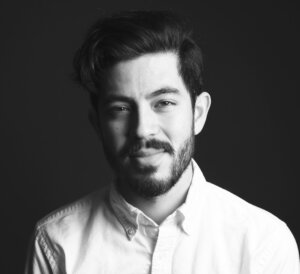
For his fellowship project, multi-hyphenate creative Jared Chiang-Zeizel will make a documentary film exploring the lives, rituals and experiences of four Asian American Jewish clergy women. “I want to share how these women navigate lives that seem to be getting more complicated by the day,” said Chiang-Zeizel, “along with the history of being Asian American and the intersection with the Jewish community over the years.”
The clergy women represent the connections between the communities, such as Jews who fled Europe during World War II and went to China. “I am drawn to the uniqueness of these women and their stories, and curious to talk to them about gender,” Chiang-Zeizel said, because of public perception that most rabbis are male.
Smith relates to Chiang-Zeizel’s vision. “So many Jews of color have grown up not seeing other Jews that look like them or who share their background,” she said. “His documentary will profile leaders to widen the lens of what a Jew — and a Jewish clergy member – looks like.”
Chiang-Zeizel grew up near Boston with a Jewish father and a multi-ethnic Asian American mother. “I was raised in a religious home,” he said. “I went to Hebrew school, had a bar mitzvah. My parents instilled pride in Jewish heritage. And it was important to my mom that we stayed connected to our Chinese heritage. Being mixed, sometimes you drift away from one half or the other — it was important to see them under one roof where we learned about and embraced both cultures.”
Now a Los Angeles resident, Chiang-Zeizel is a popular speaker on Asian and Jewish representation, mixed identity and lucid dreaming as a way to remember and reconnect with dreams. His writing and editing credits include work for Sony Pictures, Disney, Lucas Films, Netflix, Discovery Channel, Animal Planet, NPR, NBC and others. He worked on “Lunar: The Jewish-Asian Film Project,” which featured about two dozen Asian American Jews, and received the David Chase Screenwriting Fellowship. He writes in several genres and his bestselling book, “A Field Guide to Lucid Dreaming,” is available around the world in 11 languages.
His documentary will show that neither community is monolithic. “It’s rare that we hear about Asian rabbis and their struggles,” he said. “Both communities have a full multitude of individuals who cross over into both environments.”
Chiang-Zeizel emphasizes the power of role models. “We look to our religious leaders for guidance and understanding. They help people walk through their existence, understand the big questions, but also deal with things like what it feels like to walk into a space where you should belong, but you might feel like you don’t belong.”
Isaac de Castro: Exploring Jewish Latino voices in the Sephardi community
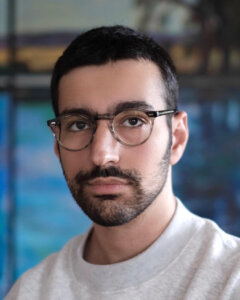
Isaac de Castro, a Sephardic Jew, grew up in Panama and came to the U.S. for college. He is a Zionist, a journalist, the editor of Jewcy.com and an activist whose fight against antisemitism is woven throughout his work.
For his fellowship, de Castro is collaborating with the American Sephardi Foundation (ASF) Institute of Jewish Experience to interview people with Latino and Sephardic Jewish identities, in particular immigrants from Latin America, for an online and in-person exhibit of oral histories, images and testimonies about these often overlooked communities.
“I’m looking to explore the experience of coming into the United States speaking English as a second language, of being Latino immigrants coming into a majority Ashkenazi community – people who came into the U.S. from Colombia, Cuba and Venezuela for political asylum and related reasons,” he said.
The fellowship opportunity with ADL (which recently honored de Castro at its Concert Against Hate), appealed to his inclusive vision. “The Sephardi experience is wrapped up in so many diasporas — Spain, the Middle East, Latin America and the U.S,” he said. “There are varied experiences that deserve to be studied, talked about, written about and put on this platform.”
He says his project will strengthen connections. “I’m presenting new voices that not many Jewish communities have heard with that kind of specificity. I think they will benefit from learning more about the people whose stories we’ll share.”
Deitra Reiser: ‘Building Racial Stamina’ in Jewish communities
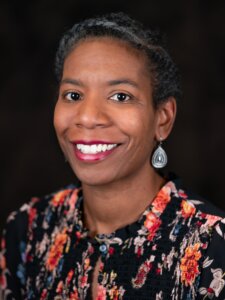
As a Black Jew, Deitra Reiser has experienced how systems of oppression and history connect for both groups. While consulting in Jewish spaces on diversity, equity and inclusion, she founded Transform for Equity in 2021 – “an antiracist repair group” to raise awareness and create personal and professional transformation toward institutional and systemic antiracism.
Reiser then used her background as a school psychologist and educator to develop the “Building Racial Stamina” curriculum, which she used in her synagogue, and then with Jewish organizations across the nation.
She noted that “racism and antisemitism fit together” with as many as 8% of Jews describing themselves as having nonwhite heritage according to a Pew Research Center study from 2021. “I find that the deep learning and facilitated discussions in Building Racial Stamina provide people an antiracist lens to participate more fully in equity assessments, institutional policy change and a solid base for executives and leaders for coaching.”
Reiser and her partner, who live outside of Washington, D.C., are committed to raising their children to feel positive about both their Black and Jewish identities. Learning that “the racism in our Jewish community was a factor out of my control, and hearing the experiences of Jews of color, especially young folks, made me want to be more active in the larger community to ensure that my children would have spaces where they felt a sense of belonging,” she said.
Reiser saw the fellowship’s potential to examine solutions to the oppression of Jews, Blacks and other groups. “We need to dig deeper to understand how to talk together. Because if we are really going to make our Jewish spaces and our world more equitable, that is where our power lies — in connecting,” she said.
Her project will expand the Building Racial Stamina curriculum into three sessions for Jewish and non-Jewish groups to reflect on and learn about the connection between racism and antisemitism. “There is resistance in both spaces, but we are making gains,” she said. “I think everyone working in this space is optimistic, or we wouldn’t be able to keep doing this work in the Jewish spaces, and in the larger society.”
Smith said Reiser’s experience makes her “the perfect person to engage in these conversations, which have sometimes become fraught as we reflect on the Jewish experience of oppression more broadly. Deitra’s focus on developing a space for reflection and building the emotional tools to stay in the conversation about how race and racism can show up in Jewish spaces is so important.”
Reiser said “that our Jewish values call us to do this work. Our Jewish community will not thrive if we’re not creating spaces of belonging. For us to really make gains towards an equitable society, we must work together to eliminate both antisemitism and racism. We cannot let this divide us.”
Carmel Tanaka: Telling Jewish Japanese stories across borders
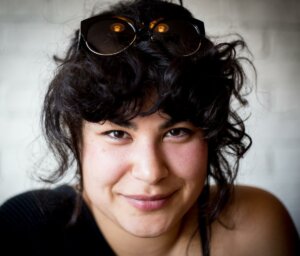
Carmel Tanaka is a founding member of the Jewpanese community — people with Jewish and Japanese heritage. Her Ashkenazi Israeli mother is the daughter of Holocaust survivors. Her third-generation Japanese Canadian father’s family was interned during World War II. “I grew up with this very public awareness of ‘never again,’ and this tug of wanting to make sure that these injustices don’t continue to happen,” she said.
For her fellowship project, Tanaka, a queer Jewish Japanese woman based in Vancouver, British Columbia, will conduct 20 oral history video interviews with members of the Jewish Japanese community in the U.S., Canada, Japan and Israel. She will focus on their lived experiences and intergenerational trauma related to the Holocaust, Japanese Canadian internment and Imperial Japan, and will make the interviews available online.
“Carmel’s project highlights overlapping identities and histories of oppression, and the experiences of mixed people in navigating sometimes contradictory cultural norms,” Smith said. “I’m really excited about the global reach of her project, which will shed light on how context can shape personal narratives in rich and nuanced ways.”
Tanaka is a community engagement leader and a sought-after speaker and consultant. She has founded several leadership initiatives including JQT Vancouver, Genocide Prevention BC and Cross Cultural Walking Tours.
Her work fosters a sense of belonging. “Beyond our siblings, we often navigated both the Jewish and Japanese communities alone. We want people with other intersectional identities — Jewish and Chinese, Jewish and Black, and others — to feel inspired to collect stories from their own communities.”
“I didn’t coin the term Jewpanese,” she said, “but it made me think about the intersectionality of my identity.” She connected with other Jewish Japanese people around foods like green matcha cheesecake or miso maple trout for Jewish holidays. In May 2020, they began monthly Zoom calls that sparked close friendships.
“As the pandemic increased both anti-Asian racism and antisemitism, the online gatherings became a safe space for participants to share what they face in both communities and ask questions that we wouldn’t dare ask in our respective separate communities,” she said.
Tanaka has already completed the East Coast portion of her project and is now working elsewhere to show the increased mixing of families and cultures, and the challenges for those with blended identities. “It hasn’t always been a smooth ride for many of us,” she said. “We sometimes have to jump through hoops and obstacles to feel we belong, and some of us are only now reconnecting with language and culture.” Her interviews and social gatherings have connected Jewpanese people, couples and families regionally. “This intergenerational piece is important – representation matters.”
She says this project can be “relatable to a lot of people who are on the periphery of the Jewish community. Getting stories and personal accounts is the best way to bring change.” Follow the journey on Instagram: @JewpaneseProject.
Sara Yacobi-Harris: Toward a more holistic definition of Jewishness
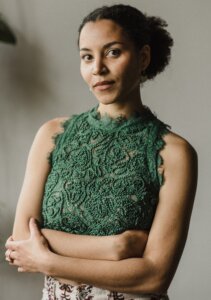
In the wake of George Floyd’s murder in neighboring Minnesota, Sara Yacobi-Harris formed No Silence on Race in Ontario in June 2020. She began with an open letter inspired by the flurry of Floyd-related community dialogues and panels with Black Jews in Canada, describing the discrimination they’d faced in Jewish spaces. Her letter asked Jewish organizations what it meant to shift the culture, and offered a nine-pillar template to help them increase racial diversity and inclusion.
In response, the Ontario Jewish Archives asked Yacobi-Harris and her team to create a portrait series titled “Periphery,” featuring Jews of color. “This was an opportunity for us to shift our focus to creating our stories in a Jewish canon where our voices and images were included,” she said.
Then Yacobi-Harris, alongside No Silence on Race and the Ontario Jewish archives, directed and produced a short documentary film, also titled “Periphery,” broadening stories of the multi-ethnic Jewish experience to include sexual orientation, geography and Jewish observance among Jews of color in Toronto. “That gave us an opportunity to expand the narrative of who is a Jew in our community, reimagining Jewish life for people like us,” she said.
“Periphery” opened doors and raised awareness. “We were having conversations with people we hadn’t met or been in community with before — those who hold prominent roles of leadership,” Yacobi-Harris said. “We were able to put our agenda forward, inquire how it aligned with theirs, and ask how we could put our agendas together.”
Smith, who was included in Yacobi-Harris’ film and photo exhibits, said she was thrilled when external reviewers selected the project for funding. “The curriculum she is developing will allow countless communities, from teens to adults, to explore issues of Jewish identity, culture and race through the personal narratives of the subjects of the film. Sara’s work will give audiences a glimpse into the ways in which Jews of color navigate their multiple identities, family dynamics, and community contexts,” Smith added.
Yacobi-Harris, an artist of Jamaican and Georgian ancestry, as well as a filmmaker, media professional and community organizer, has worked on several television and digital productions at the Canadian Broadcasting Corporation. She has led equity, inclusion and anti-racism strategy and policy implementation, along with community outreach, talent development and festival partnerships at the CBC.
In 2017, she produced and directed the documentary film, “Who is a Jew?” exploring the roots of cultural and ethnic identity and the experience of Black Jews and Jews of color in Toronto. She has worked with the Ontario Jewish Archives, Toronto Jewish Film Foundation and Hillel Ontario, and spoken at Jewish conferences, seminars, and events including Canada’s National Summit on Antisemitism.
She’ll use the fellowship to expand “Periphery” with two sets of curricula, as Reiser is doing: one for Jewish audiences, and one for non-Jewish audiences, with versions for grades eight to 12 and for adults. “This educational supplement is a screening guide to help facilitate conversations that foster greater awareness and understanding of who Jewish people are, and the diversity and intersectionality in Jewishness,” she said.
“The supplement, which will include relevant Torah elements, is digitized and used in classrooms in and outside of Jewish community spaces, multifaith spaces, and university spaces throughout Canada to combat stereotypes and prompt conversations about who Jewish people are locally and globally.”
Yacobi-Harris is buoyed by responses to the “Periphery” film. “People have reached out to tell us how it changed their perception. It’s shifting the way people think about being Jewish. That’s what drives me. That’s the goal.”
Check out and download the curriculum here.
